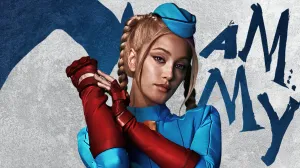Spider-Man: No Way Home is now playing in theaters, earning an incredible fan response and box office gross. ComicBook.com has been celebrating all things Spider-Man-related with a new ComicBook CRAM! Check out some of the great features our team has put together, including our list of the 10 Best Multiversal Versions of Spider-Man, Spider-Man’s Strangest Tales With the Sorcerer Supreme, Ranking Every Spider-Man Movie’s End Credits Song, and much more.
Videos by ComicBook.com
With the eighth live-action Spider-Man movie, Spider-Man: No Way Home, Marvel Studios and Columbia Pictures have brought things full circle in a way that would have seemed impossible even four years ago. The culmination of Tom Holland’s trilogy of feature films as the webslinger delivers a mostly satisfying treatise on the methodology and means of being Spider-Man, but in a far more clumsy way than Spider-Man: Into the Spider-Verse, which is certainly the gold standard of both Spidey and multiverses. What No Way Home gives us is a big film that promises to get small, but it kind of knows that it has written itself into a corner and to get out it has to get bigger. Your mileage may vary on how effective all that bigness is in the end, but there’s no denying that when the movie is allowed to get going it’s a blast to watch.
Beginning in medias res, and immediately after the mid-credits scene of 2019’s Spider-Man: Far From Home, we’re treated to a Peter Parker that has been unmasked to the world and who must grapple with that along with the danger that his friends and family have been put into by association. Considering Peter’s eventual solution to involve Doctor Strange and ask for a spell that would make almost everyone forget all this, it’s a little funny how Marvel waves a hand and ends this plot thread basically before it can really get started. It’s a movie with a destination and because of how the previous entry concluded they are forced to make this pit-stop, resulting in the opening of No Way Home becoming easily its weakest portion.
As the marketing has revealed, this spell doesn’t go as planned and as a result all the villains from other universes who know about Peter Parker are drawn into the MCU. Both the highs and lows of Spider-Man films of yore are present, with Alfred Molina’s Doc Ock and Willem Dafoe’s Green Goblin returning to command the screen every time they appear. Jamie Foxx gets a do-over from The Amazing Spider-Man 2, this time mostly playing himself rather than the version of Electro that appeared in that movie (not literally). It’s not to say that none of this trio, or the other villains, aren’t great on screen because they are. One sequence where they all banter back and forth about being villains and fighting Spider-Man is another high-mark for the movie. It would be easy to be upset that Holland’s latest movie doesn’t even let him get any new villains, but it’s hard to be mad when Dafoe is letting that iconic laugh roar.
Where No Way Home seems to struggle the most is with Holland’s titular hero. It’s not that he’s bad in the movie – few leads in MCU really are – but he is outshined by almost everyone else around him. There are sporadic instances where he’s able to break through the exposition bubble that he spends most of the movie in, times where he can channel that energy he had in the best moment of Spider-Man: Homecoming where he cheers himself on from under a pile of rubble. One line in particular, where he pleads with Doctor Strange to let him try and help these villains, is the linchpin of the entire MCU Spider-Man franchise and Holland delivers the four words like his life depends on it: I have to try. Scenes like these are when he really shines and you can see how great of a Peter Parker he is, but when the CG Tom Holland is tasked with doing something on screen there’s a disconnect. Sure, he moves like Spider-Man – but it’s all artifice, and we can tell.
In fact, that’s a larger issue with No Way Home – and the Marvel Studios style of filmmaking anyway. The sequences that are supposed to be bombastic and evidence of how much the movie cost sometimes feel hollow, but when things are real you can feel it. Every tender moment between MJ and Peter carries weight, and one particular fight sequence with Spider-Man and the Green Goblin is among the movie’s best sequences, not only because it feels contained but also tactile. Floors get broken as they brawl, walls shatter, windows burst, and you can see Tom Holland sweat and bleed. It’s one of the times in the movie where he embodies the ethos that he said earlier: I have to try.
The secret weapon of Spider-Man: No Way Home is Zendaya, whose casting as MJ has proven to be one of the smartest things Marvel Studios has done with Spider-Man since they were able to get him in their toy chest. She can do it all – deliver dead-pan comedy, be present for drama, bring the mood up or down. Frankly, most of the heaviest beats in the film fall to her, and she excels. Dafoe’s return as Green Goblin is tremendous and reminds you how good he is on the whole as he chews the entire scenery into ribbons. Molina’s Doc Ock gets the same dramatic pathos that he was known for in 2004’s Spider-Man 2. Tragically there’s so much going on in the movie, and so many other villains, that their time is limited, but what time they have is dynamic.
Fans of both Sam Raimi and Marc Webb’s Spider-Man movies will be excited by the references and shout-outs that this film gives to those previous swings at bat. By that same notion, the film does the irritating thing of putting elements from those movies on blast for being corny, silly, or stupid, and though some of them are it’s hard not to ponder what yet another reboot of Spider-Man will say to try and score points at some other time in the future. Is this one really that much better than what came before it that it can rightfully punch down? (The answer is yes when it comes to The Amazing Spider-Mans.)
As far as direction in No Way Home goes, a showy one-shot near the opening of the movie is about the only sense of personality we see out of Watts as a filmmaker, but there are other times where he’s able to break this blockbuster mold he has been cast into. One major beat, for example, really the only scene that channels the trippy visuals of 2016’s Doctor Strange is better than any of those sequences that are similar in that film. No Way Home is also able to realize the Spider-Sense power in a way that sets the MCU apart from previous versions, and it’s able to do it without a wacky CG effect. Fight set pieces are what all these Marvel movies get built around anyway and No Way Home has some inventive ones, though it suffers from the same issues as so many others with its big third-act-in-the-sky syndrome.
Spider-Man: No Way Home marks a clear line in the sand for this character, a delineation point of where things might go. Throughout the movie, the implication is that this huge story must be told so that things can go back to being smaller, friendly-neighborhood sized, but can they? Will Marvel and Sony allow a follow-up to this movie to actually be contained? The economics of modern Hollywood would certainly lead you to believe the answer is “No,” but Marvel and Sony leave things in an interesting place and clearly have a Peter Parker suited to handle more. If it is the end, though, it has the best final shot of any of the Marvel Studios Spider-Man movies.
Rating: 4 out of 5








